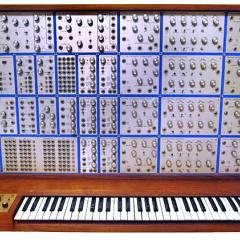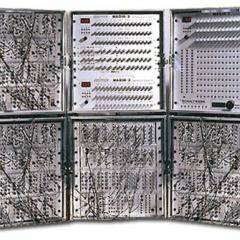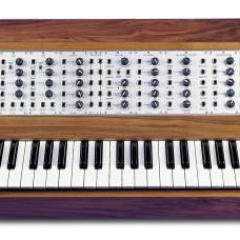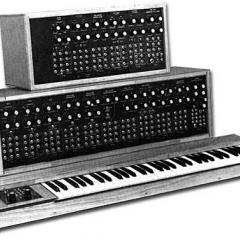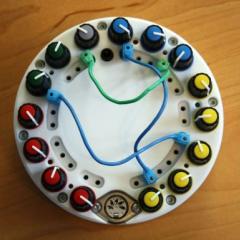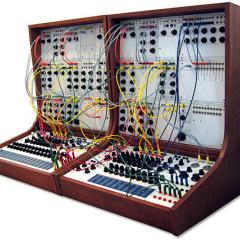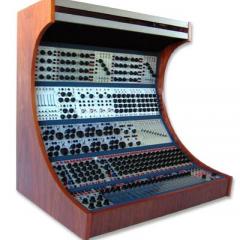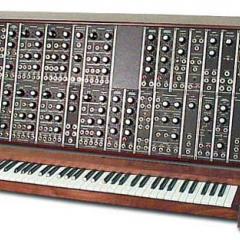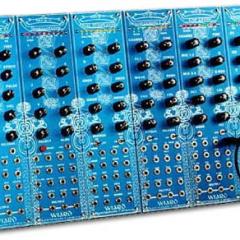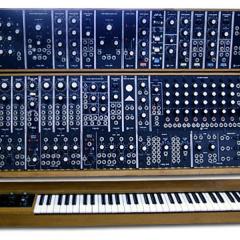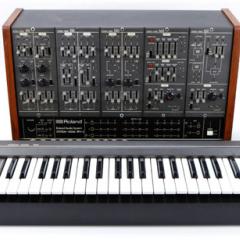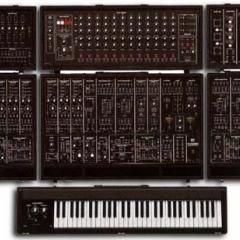Buchla 200e Series
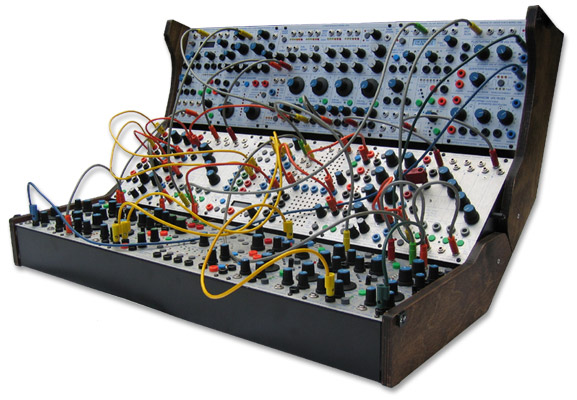
The Buchla 200e is a 21st century rebirth of the 70's classic 200 series analog modular systems from Buchla. It is still an analog synthesizer, but with some 21st century improvements, most notably the addition of MIDI control, patch memory storage and digital hybridization. Other improvements include internal MIDI buses, more voltage controlled parameters, a router for signals and control voltages, velocity sensitivity, and a redesigned output section of the complex oscillator module. A few new modules have also been added including a duophonic pitch class generator and a triple morphing filter.
The 200e may be new but it is still a classic modular system. That means potential customers must start with an empty cabinet, and select the synthesis modules from the 200e series to design the system to their personal needs. It is even possible to add some of the original classic 200 series modules to it, and to add the new 200e series modules to an original 200 system. With five cabinet sizes to choose from (from 2 panels to 18 panels), no two systems may look alike, and they can range from just a module or two to the complex analog beast pictured above.
The 200e series is not exactly analog either (nor digital). The 200e series is truly an analog-digital hybrid modular system with an analog user-interface but a state-of-the art underlying electronic system designed to provide stable, dynamic musical sounds with exceptional sonic quality. Buchla's engineers sought the best possible designs for their modules which meant that in some cases the signal path may be truly analog, while in other cases they may in fact be digital. Almost all analog signals are also controlled by digital componentry for maintaining stability or to enable patch storage, for example. Speaking of patch storage, the 200e will only store knob settings and switch position but not patch cable routings.
As awesome as having modern day Buchla 200 analog systems available for purchase is, they are still very hard to come by. New systems must be ordered directly from Buchla and they are expensive! A complete system could cost anywhere from $10,000 to $30,000! Individual modules cost on average about $1,000. The price tag, learning curve and really old-school nature will certainly put this system out of the realm of the casual musician. Yet, with the demise of so many classic synth makes (ARP, EML, EMS), and the abandonment of their analog-modular heritage by so many existing makes (Roland, Moog, E-mu) it is truly exciting to see one of the original pioneers, Don Buchla, using today's technology to continue making yesterday's synthesizers.
Modules for the Buchla Series 200e
- 201e Powered Cabinet - Available in sizes to accommodate 2, 4, 6, 12, 18, or 24 panel units. A 3u external frame for the 222e/223e touch surface is also available.
- 206e Mixer / Preset Manager - A six input, two output mixer with controls for level and stereo location. A preset manager is also incorporated.
- 207e Mixer - The top section is the same as the mixer model 206e, but the bottom section (formerly a preset manager) has been replaced by a microphone preamplifier.
- 210e Control and Signal Router - Directs the routing of up to eight control voltages and eight audio signals.
- 222e Multi-Dimensional Kinesthetic Input Port - A unique touch-sensitive keyboard/performance input device that generates control voltages. 27 keys sensitive to velocity and pressure. 14 respond to location in one or two dimensions. Two rings provide spatial information in three dimensions.
- 223e Tactile Input Port - This module is the same as the 222e but replaces the rings with an arpeggiator.
- 225e MIDI Decoder / Preset Manager - Translates incoming MIDI Note and Controller data into analog control voltage & gate. Patch storage and recall.
- 227e System Interface - Facilitates EQ, mixing, mic preamp, and four channel audio outputs
- 230e Triple Envelope Tracker / Preamplifier - Three envelope trackers which have adjustable gains and variable response times as well as three preamps, each with variable gain and dual input connectors (TRS or XLR).
- 250e Arbitrary Function Generator - 16-stage function generator (a sequencer of sorts).
- 255 Control Voltage Processor - An 8-channel lag processor. Can delay a signal from 0.1 to 10 seconds. (Not an "e" module and can not store data in patch memory).
- 256e Quad Control Voltage Processor - Voltage scaling, inversion, addition, multiplication, weighted averaging, and voltage controlled selection.
- 259e Twisted Waveform Generator - Digital wavetable oscillator with the ability to scan the running firmware and treat the results as a wavetable (hence "Twisted")
- 260e Duophonic Pitch Class Generator - Two independent, voltage controlled pitch class generators (a pitch class generator produces a singular pitch in every perceivable octave) with frequency modulation inputs and a five-band spectrum shaping facility.
- 261e Complex Waveform Generator - Oscillator with voltage-controlled modulation of pitch, amplitude, and timbre, and a multi-dimensional, voltage-controlled analog timbre space.
- 266e Source of Uncertainty - Noise generator (3 types), Fluctuating Random voltages (for creating percolating and uncertain movement), Quantized Random Voltages (synced to pulse input), Stored Random Voltages
- 281e Quad Function Generator - A four stage voltage controlled envelope generator with attack and decay knobs.
- 285e Frequency Shifter / Balanced Modulator - The top section performs frequency shifting; the bottom section is independent, and functions as a balanced modulator of applied signals.
- 291e Triple Morphing Filter - Three voltage controlled filters operating in parallel or independently, with morphing capability to morph between various parameter settings of the filter.
- 292e Quad Dynamics Manager - Four voltage controlled amplifiers that can operate in 3 modes: VCA (straight gate), VCF (lowpass filter), or a combination of the two.
- 296e Spectral Processor - 16 channel bandpass filter with built-in analysis and synthesis capability. It can function as a real time performance filter, a programmable compound equalizer and even as a spectrum transferring vocoder.
- 297 Infinite Phase Shifter - Up to 1800 degrees of voltage controlled phase shifting. Barber-pole phase shifting sounds like continuously moving phase shifting in one direction. (Not an e series and can not store settings.)
Demos & Media
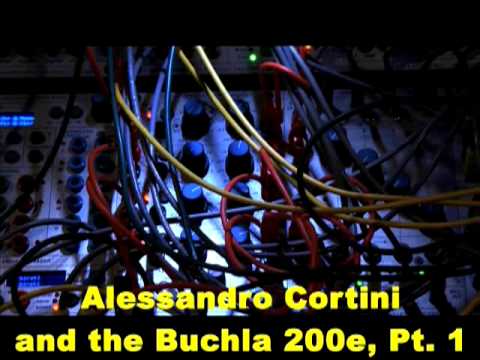
Specifications
260e - Duophonic Pitch Class generator (generates two independant singular pitches in every perceivable octave)
Websites of Interest
Resources
Images from Buchla & Associates
Reviewed March 2009
